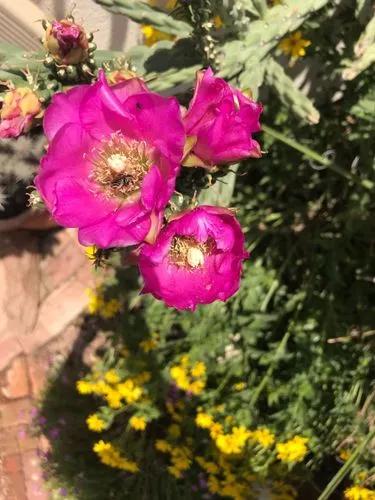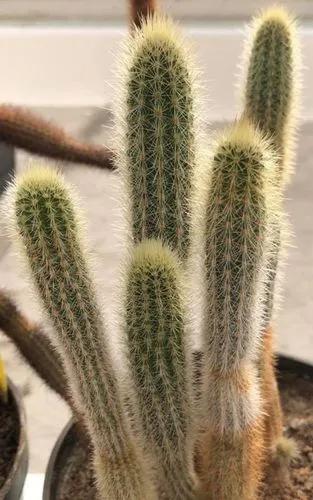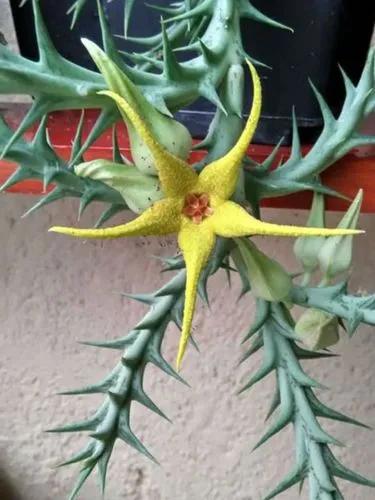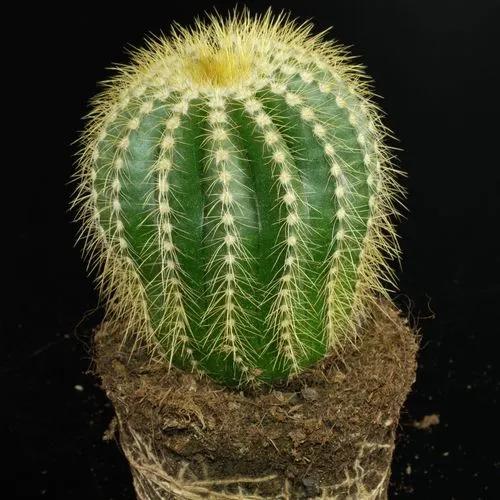Acanthocereus tetragonus is a species of cactus native to Florida, Texas, Mexico, Central America, Caribbean, and northern South America. Common names include night-blooming cereus, barbed-wire cactus, sword-pear, dildo cactus, triangle cactus.
Barbed-wire cactus Care
Acanthocereus tetragonus



Acanthocereus tetragonus is a tall, columnar cactus that reaches a height of 2–7 m (6.6–23.0 ft). Stems are dark green, have three to five angles. The flowers are 14–20 cm (5.5–7.9 in) in diameter with a tube 8–15 cm (3.1–5.9 in) in length. Outer tepals are greenish-white, inner tepals are pure white, and pistils are creamy white. Flowers are open from midnight until dawn, attracting hummingbird moths. The shiny, red fruits are around 5 cm (2.0 in) long. This highly spiny, often large, and thicket-forming cactus has stems up to 10 feet or possibly taller. It is native to the coastal hammocks and hot, dry coastal habitats and thickets and sandy coastal habitats. The flowers are showy and are white with a deep red and orange or red-orange center. The flowers bloom at night and close during the day. This cactus often forms thickets in coastal hammocks which can be impenetrable and spiny.
How to Care for the Plant

Water

Most cactus should be watered once a soil has completely dried out. Don't water on a schedule, but monitor a condition of a plant and dryness of a potting mix to know when to water a cactus. Factors such as size of cactus, size of pot, temperature, humidity and season will all affect how often to water cactus plants.

Pruning

By removing overgrown foliage, you will improve airflow to the plant, and light will be better able to penetrate all portions of the plant. This actually leads to a fuller and healthier-looking houseplant.

Fertilizer

Most cacti and succulents don't need a specific blend. They grow healthy and happy when fed with a highly diluted all-purpose fertilizer. However, a low-nitrogen content, water-soluble fertilizer is best suited for the job. Use a 5-10-10 blend or 10-10-10 fertilizer diluted to 1/4th strength.

Sunlight

Grows it's best and fastest with full sun exposure, but it can do well in partial shade.

Soil

Mix together three parts potting soil, three parts coarse sand or gravel, and two parts perlite or pumice. Don't use a potting soil mix that contains fertilizers because the fertilizer can burn cacti roots and cause leggy growth.

Temperature

It prefers average temperatures between 50°F-75°F/10°C-24°C are ideal but not below 40°F/ 5°C. Avoid freezing temperatures.

Container

Plants that don't like a lot of moisture will need a drainage hole for moisture to escape and for airflow to circulate through the pot. Another important function of drainage holes is to allow water to flush the soil of excess salts from fertilizers. Terracotta containers are a good choice for cactus gardens. They let water evaporate faster than other materials. Terracotta containers are a good choice for cactus gardens. They let water evaporate faster than other materials.

Popularity

18,536 people already have this plant 2,740 people have added this plant to their wishlists
Discover more plants with the list below
Popular articles






